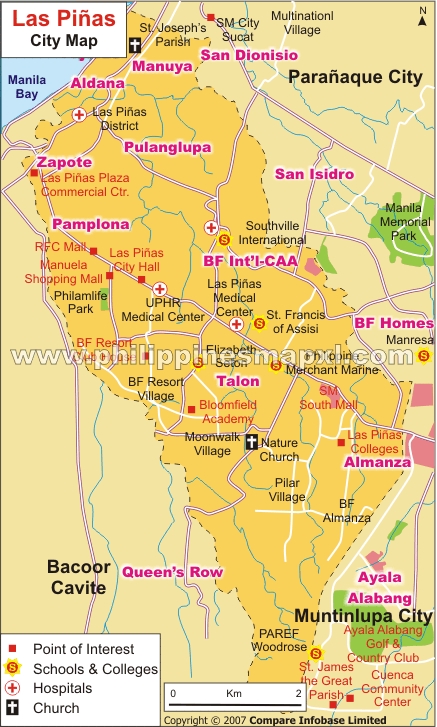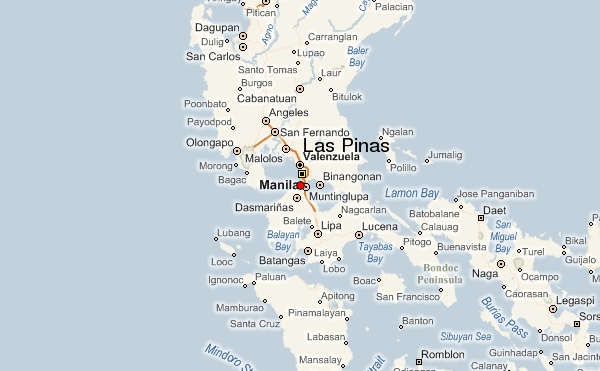
-
МјРЇСІИёСЖШИМі
-
 И№ОЫ КИОЫ Йъ ЗЛЦЎЧЯБт~ ИЎСЖЦЎ ПЙОрБюСі
И№ОЫ КИОЫ Йъ ЗЛЦЎЧЯБт~ ИЎСЖЦЎ ПЙОрБюСі 88,177
88,177 -
 [ЧЪИЎЧЩ ММКЮ] ФЋИ№ХзНК ПЉЧр 100Йш СёБтБт
[ЧЪИЎЧЩ ММКЮ] ФЋИ№ХзНК ПЉЧр 100Йш СёБтБт 38,549
38,549 -
 ИЖДвЖѓ НУГЛ - ИЎРп АјПјСЄКИ. (ЛчСј 16Рх ЦїЧд)
ИЖДвЖѓ НУГЛ - ИЎРп АјПјСЄКИ. (ЛчСј 16Рх ЦїЧд) 30,129
30,129 -
 ММКЮРЧ СіПЊСЄКИ15,124
ММКЮРЧ СіПЊСЄКИ15,124 -
 ИЖДвЖѓ БйБГ - ЕћАЁРЬЕћРЬ ПЉЧр СЄКИ13,643
ИЖДвЖѓ БйБГ - ЕћАЁРЬЕћРЬ ПЉЧр СЄКИ13,643 -
 [ЧЪИЎЧЩ ММКЮ/ИЗХК] ШЃХк МїЙк ПфБн Йз СЄКИ12,658
[ЧЪИЎЧЩ ММКЮ/ИЗХК] ШЃХк МїЙк ПфБн Йз СЄКИ12,658 -
 КИЖѓФЋРЬРЧ И№Еч И№НРРЛ КММі РжДТ ЛчСјУИ.12,534
КИЖѓФЋРЬРЧ И№Еч И№НРРЛ КММі РжДТ ЛчСјУИ.12,534 -
 ИЖДвЖѓ БйБГ - ЦХЛѓЧб ЦјЦї ПЉЧрСЄКИ12,092
ИЖДвЖѓ БйБГ - ЦХЛѓЧб ЦјЦї ПЉЧрСЄКИ12,092 -
 [ММКЮ-ЙшМБТјРх] МБЙкШИЛч РќШЙјШЃПЁПф~11,662
[ММКЮ-ЙшМБТјРх] МБЙкШИЛч РќШЙјШЃПЁПф~11,662 -
 ИЖДвЖѓ СіПЊ(ПЁИЃЙЬХИ -ИЛЖѓХз)РЧ СіЕЕ/ЧбБЙ РННФСЁ/МюЧЮИє11,555
ИЖДвЖѓ СіПЊ(ПЁИЃЙЬХИ -ИЛЖѓХз)РЧ СіЕЕ/ЧбБЙ РННФСЁ/МюЧЮИє11,555


The City of Las Piñas (Filipino: Lungsod ng Las Piñas) (population: 532,330, 2007 Census) is a city in the
National Capital Region of the Philippines. It is bounded on the north and northeast by the Parañaque City; on
the east and southeast by Muntinlupa City; on the south by the Municipality of Imus, Cavite; on the southwest
and west by the Municipality of Bacoor, Cavite; and on the northwest by the scenic Manila Bay. Half of its land
area is residential and the remaining half is used for commercial, industrial and institutional purposes. The
present physiography of Las Piñas City consists of three zones: Manila Bay, coastal margin and Guadalupe
Plateau.
The city is bisected by Real (Spanish for Royal) Street, also known as the Alabang-Zapote Road . It forms part
of the Maharlika Highway which spans the whole country. The Alabang–Zapote Road connects the South Luzon Expressway which passes through Muntinlupa City in the east to the Coastal Road along Manila Bay.
The Coastal Road, despite its name, is a major tollway which runs the southern length of Metro Manila's
shoreline with Manila Bay. It is an important artery for people commuting to and from Las Piñas City and
In 2004, a new road called "Daang Hari" (Tagalog for King's Way) was completed in the eastern part of Las Piñas City, which connects the city to the neighbouring towns of Bacoor, Cavite, Muntinlupa City, and San Pedro,
Laguna, allowing residents to avoid heavy traffic in the Zapote and Alabang (Muntinlupa) districts. Daang Hari
is a popular route for cyclists, especially on weekends.
The City
Since its establishment as a small fishing port and a major salt-making center during the Spanish Era,
Las Piñas City has grown into an important residential, commercial and industrial suburb of Metro Manila.
Las Piñas City is world famous for its Bamboo Organ, located inside the St. Joseph Church of the Parish of
Las Piñas, formerly known as San Jose Parish Church in the Spanish Period, as the only organ of its kind in
the world. Built in the year 1824 by Catholic priest, Fr. Diego Cera, created out of bamboo, wood, and metal, this famous organ is praised for its unique, rare, and melodious sound.
The Sarao Motors factory is also located in Las Piñas City, the place where the world-famous Jeepney is
assembled piece by piece in painstaking individual production. The factory remains open to buyers and curious visitors all year round.
Las Piñas has a large shopping mall named SM Southmall, which has an area of 205,120 square meters and is
located along Alabang–Zapote Road. The newest shopping mall development in the city is SM Center Las Piñas, located few meters away from the City Hall. The first high rise building in the city is 16 story residential
building Almanza Metropolis.
Las Piñas City, also known as one of the cleanest cities in Metro Manila, is in the list of the "Clean and
Hall of Fame" awarded by the Philippine Government. It is also the first local government unit in the Philippines
that has been honored with the prestigious Global 500 Roll of Honour of the United Nations Environment
Programme (UNEP). These honors were in recognition of the city's outstanding achievements in the protection
and improvement of the environment.
Las Piñas City has recently acquired the status "Most Competitive City" in the Philippines, together with
Davao City, Makati City, Muntinlupa City and Marikina City.
History

Las Piñas was one of the earliest fishing settlements on the shores of Manila Bay and was proclaimed a
either in the year 1762 or 1797. Its exact date of creation cannot be ascertained because historical records vary. Cavada, a Spanish historian and Fr. Juan Medina placed it at 1762 while Buzeta recorded the date at 1797.
Besides being famous for its Bamboo Organ, which was built by Fr. Diego Cera and completed in 1824, the
town of Las Piñas was also a major war theater during the 1896 Philippine Revolution, as it was occupied by
Gen. Emilio Aguinaldo's forces. Las Pinas was also, occupied by the Japanese during Second World War, to
be followed by the liberation period, when the combined Filipino and American forces fought the Japanese
Imperial armed forces until the end of war.
In 1901, the Municipality of Las Piñas was incorporated from Cavite to the newly created province of Rizal
pursuant to Philippine Commission Act No. 137. Two years later, it was combined with Parañaque, the latter
being the seat of a new municipal government.
It became a separate municipality from Parañaque on March 27, 1907 by virtue of Philippine Commission Act No. 1625. Then, with the founding of the Metropolitan Manila Area (now Metro Manila) in 1976, Las Piñas became one of the municipalities making up the region.
On February 12, 1997, President Fidel V. Ramos signed the bill declaring Las Piñas a new city. A plebiscite held a month after found the residents in approval of cityhood and Las Piñas became the 10th city of Metro Manila on March 26, 1997.
Culture
Las Piñas City is home to unique festivals like the "Bamboo Organ Festival", "Waterlily Festival", "Bamboo Festival" and "Parol (Lantern) Festival".
- ЁЄ
- ЁЄ
- ЁЄ
- ЁЄ
- ЁЄ
- ЁЄ
- ЁЄ
- ЁЄ
- ЁЄ
- ЁЄNmjNUuzXqd
- ЁЄNmjNUuzXqd
- ЁЄNmjNUuzXqd
- ЁЄNmjNUuzXqd
- ЁЄNmjNUuzXqd
- ЁЄNmjNUuzXqd















 ЧЪРкДхФФ ОпАЃЛѓДу ПРЧТ
ЧЪРкДхФФ ОпАЃЛѓДу ПРЧТ 11ГтПЌМг МвКёРкИИСЗ 1РЇ
11ГтПЌМг МвКёРкИИСЗ 1РЇ
 ГЛАд ИТДТ ОюЧаПј УЃБт
ГЛАд ИТДТ ОюЧаПј УЃБт
 ИЎОѓ ЧаБГ ЙцЙЎБт
ИЎОѓ ЧаБГ ЙцЙЎБт
 СжИЛПЁ ГЛАЁ ОЕ КёПыРК?
СжИЛПЁ ГЛАЁ ОЕ КёПыРК? УжАэАЁМККё РЬКЅЦЎ СёБтБт
УжАэАЁМККё РЬКЅЦЎ СёБтБт
 ЧіСіПЁМЕЕ ЧЪРкДхФФ!
ЧіСіПЁМЕЕ ЧЪРкДхФФ! ЧіСіПЁМ АЁДЩЧб
ЧіСіПЁМ АЁДЩЧб









 ЧЪРк ЦЏБо Ч§ХУ! ФСНУОюСі МКёНК
ЧЪРк ЦЏБо Ч§ХУ! ФСНУОюСі МКёНК



 АЁСЗПЌМіЗЮ ДйЧдАд ОзЦМКёЦМ
АЁСЗПЌМіЗЮ ДйЧдАд ОзЦМКёЦМ





























